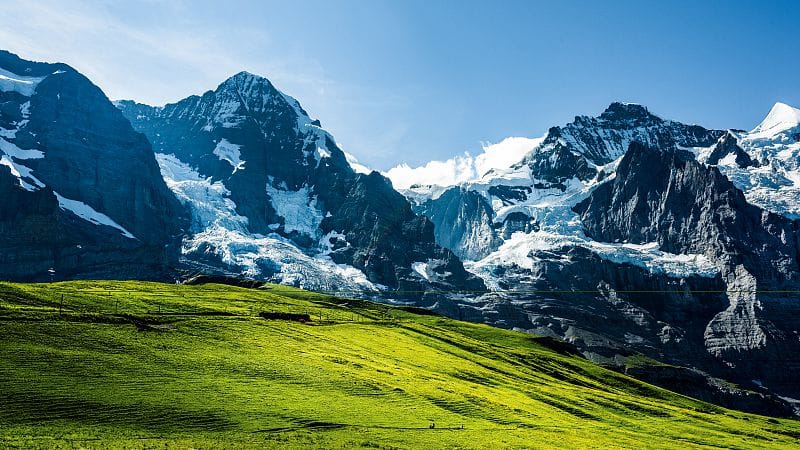
The snow-white Alps are turning green according to a new study based on satellite data analysis. Here’s everything you need to know about how climate change is affecting the planet.
Alps: Another victim of climate change
Climate change is a very real problem and the snow-clad Alps are its newest victims. The change is visible from space. Now, green plants can be seen in the mountain range. Researchers used satellite data to analyze and better understand the extent of change. Published in Science, the study reveals that since 1984, the vegetated areas above the treeline have increased by 77% in the Alps.
Additionally, with rising temperatures and rainfall levels, the growing season is also stretching. This also helps new plants grow taller and colonize newer areas. “Absolutely massive” stated Professor Sabine Rumpf. Prof. Rumpf is the lead author of the study from the University of Basel. As per the study, the loss of less than 10 percent of snow cover above the treeline is highly significant. Mountain areas are heating up twice as fast as the global average and rising amounts of plants at higher altitudes threaten the alpine plants. “The unique biodiversity of the Alps is therefore under considerable pressure,” stated Rumpf.
A vicious cycle of greening in alpine regions
“It is climate change that is driving these changes. Warming means that we have longer vegetation periods, we have more benign conditions that foster plant growth, so plants can just grow more and faster,” explained Rumpf. “What we kind of tend to forget is the emotional aspects of these processes that the Alps are like a very iconic symbol and when people think about Switzerland, it’s usually the Alps that they think about,” she stressed.
“We were very surprised, honestly, to find such a huge trend in greening. Greener mountains reflect less sunlight and therefore lead to further warming. And, in turn, to further shrinkage of reflective snow cover,” added Rumpf.
“Previous analyses of satellite data hadn’t identified any such trend. This may be because the resolution of the satellite images was insufficient. Or because the periods considered were too short,” stated Professor Antoine Guisan from the University of Lausanne. The greening might move into browning. Another phenomenon known as browning, where the ground is no longer covered in snow or vegetation is currently present in less than one percent of the studied areas. Hence, the future of the Alps is unpredictable.
